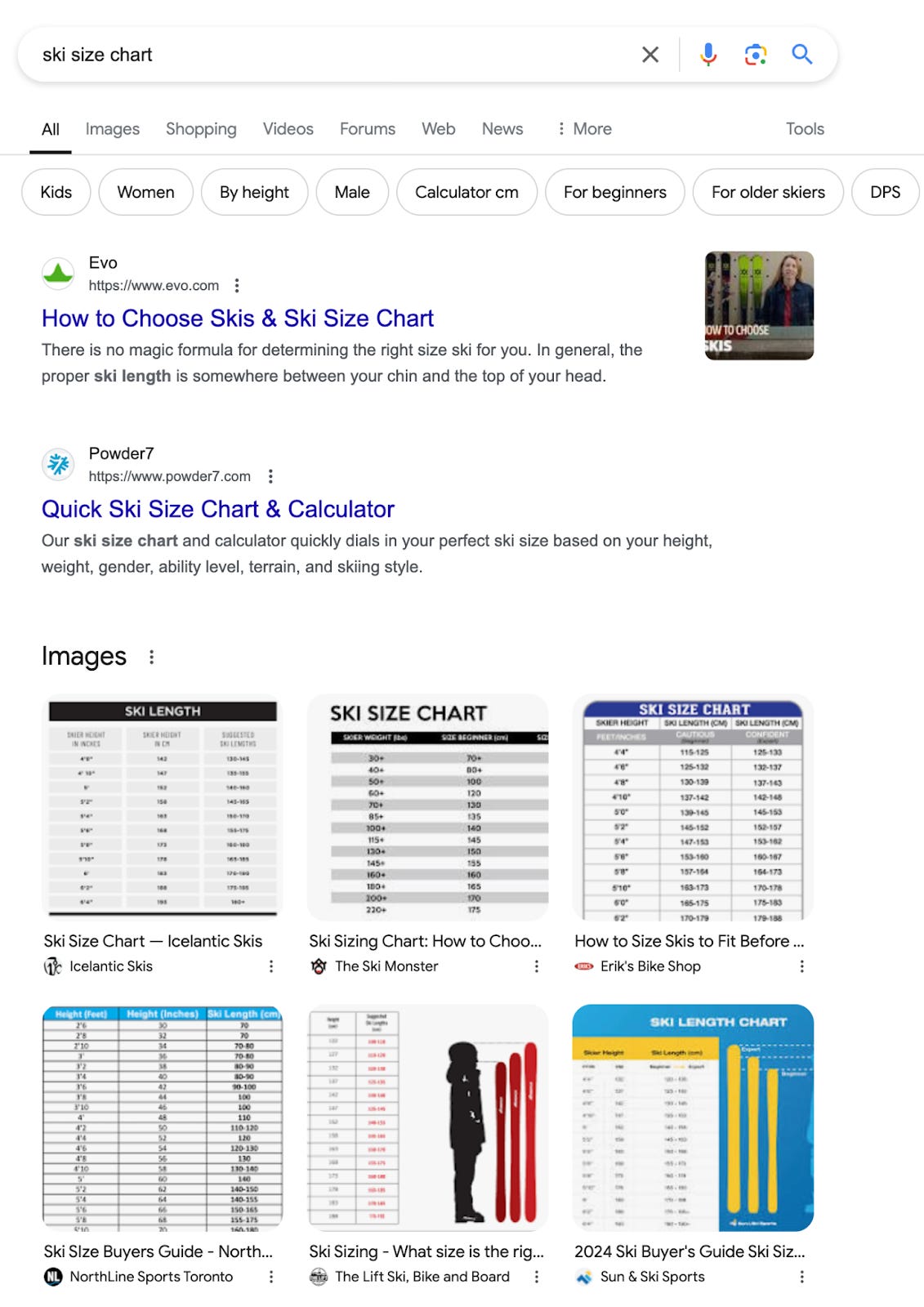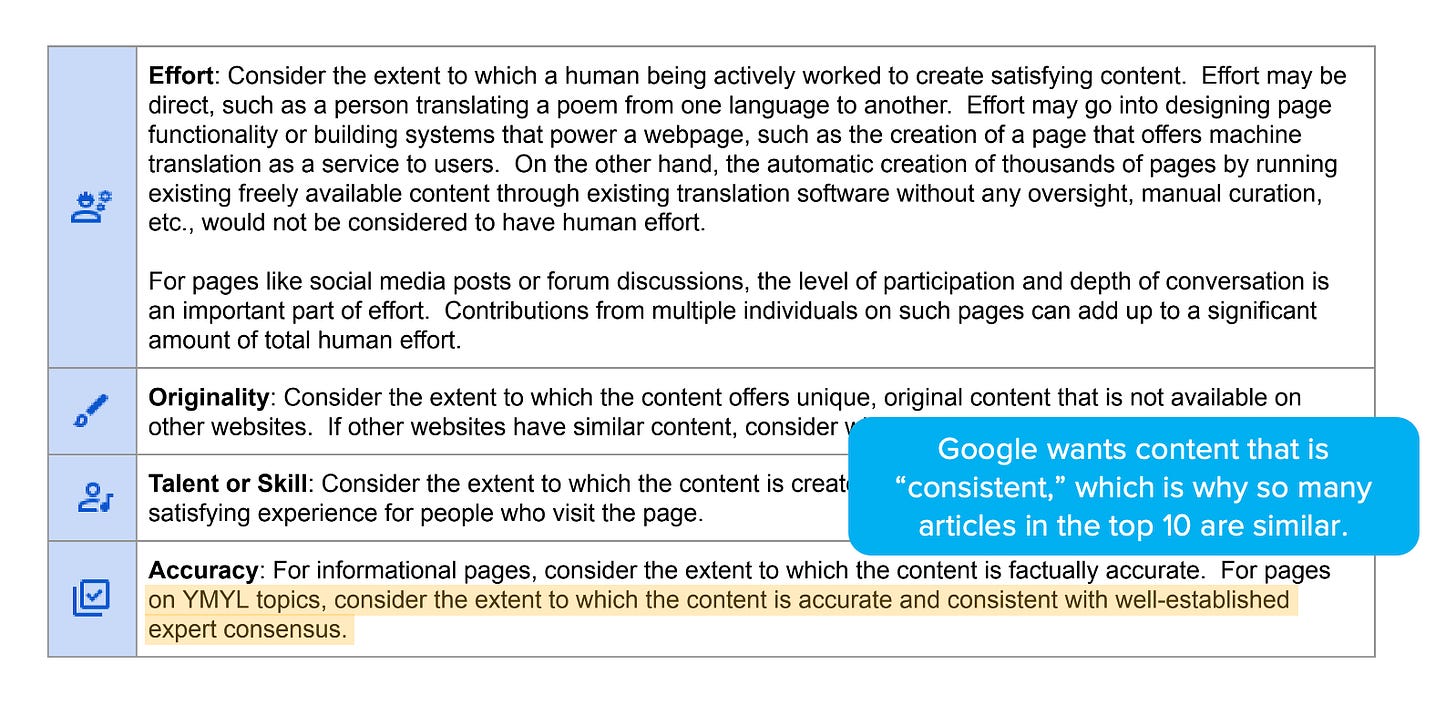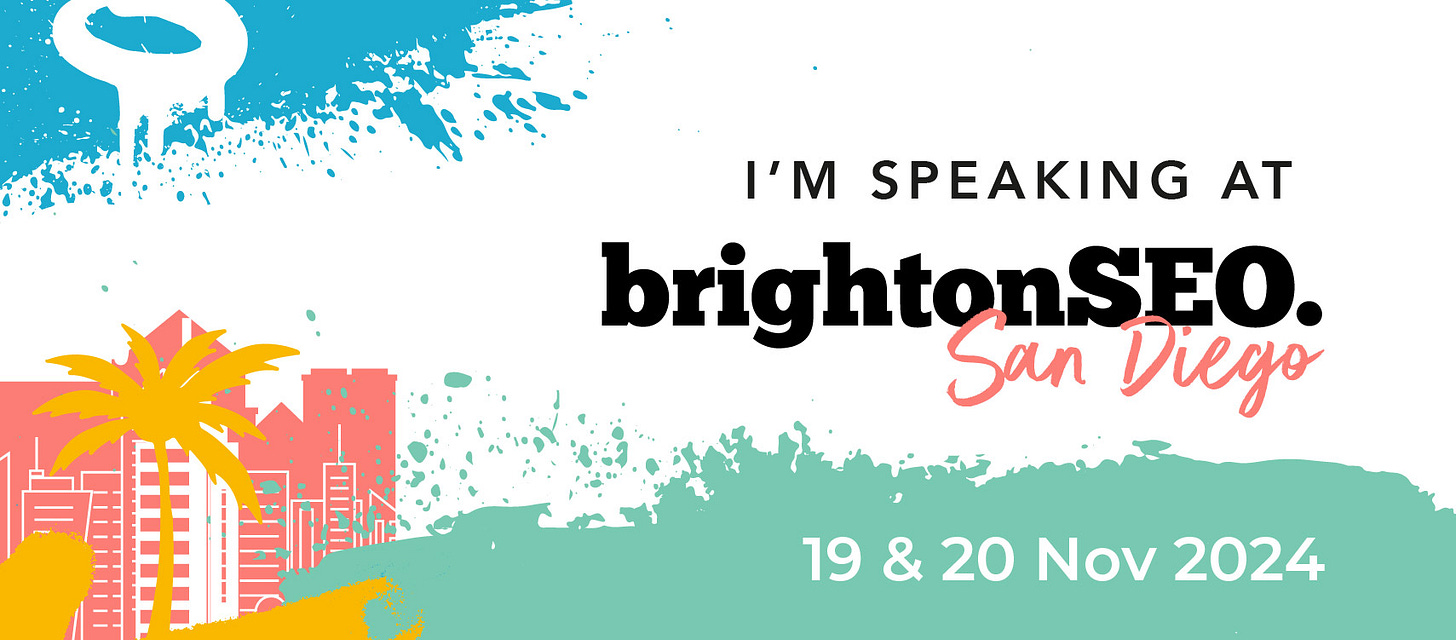Search Intent
is (still) a competitive advantage
Over 5 years ago at MozCon, I introduced the idea that nailing search intent was the key to getting a top 3 ranking. I talked about how Google had moved beyond “Do/Know/Go” (or transactional, informational, navigational) intents to look for formats like structured lists, processes with action steps, specific answers, and more. I explained how Google’s algorithms weren’t looking for keywords but subtopics, known facts, and entities. And I discussed strategies to leverage natural language processing for growth.
Now, that kind of search intent is table stakes. You have to nail your format if you want to even be in the ballpark of page one. And, so, the question is, what’s next?
Search Intent in 2024
Search intent is still what can get you into the top 3, but you have to get way more specific than “list format” or “action steps.” Look at the results for ski size chart.
Both articles that rank here have a calculator to get your own custom size and a size chart table.
This is where experienced (human!) editors become extremely important. AI doesn’t yet understand intent (and I’ve tried a lot of different models.) If you ask ChatGPT what you need to outrank these two articles, it suggests “detailed guidance” and “structured data.”
You can have all the detailed guidance in the world, but you won’t get to #1 here without a calculator and a size chart table.
Or, look at Eras Tour outfit ideas. You can’t rank without custom Canva-style images of curated outfit ideas.
That custom image is why all these tiny brands outrank a more authoritative domain like Refinery 29.
One more for you in the e-comm space. Here’s women’s barrel jeans:
The intent is individual product listings. If you aren’t optimizing your product feeds and trying to win on price, shipping, or reviews, you aren’t going to get seen.
Part 2: Consensus & Differentiation
There is a caveat. Search intent isn’t quite enough. You also need consensus & differentiation.
There’s a strong argument that all the articles Google chooses to rank look the same and give the same answers. This is by design. Google has really leaned into consensus in the last few years. See what it says in its guidelines for human quality raters:
This is especially true for sites in the financial and health space, but I see it happening across the board, even with topics as simple as how to pack a backpack.
So when everything gives the same answer, how does Google decide gets to rank number 1? This is where “originality” comes into play.
Google looks for “unique, original content that is not available on other websites.” Sites like NerdWallet are really good at this, packing its articles with helpful facts.
If I ask whether I can use a credit card to buy a money order, NerdWallet also gives me popular places to get a money order:
“Most retailers, banks and credit unions don’t let you purchase money orders with a credit card. Popular places to get a money order — including the U.S. Postal Service, Walmart, Western Union and 7-Eleven — accept only cash or debit cards for money order purchases.”
Or let’s look at e-comm:
There are a million articles about the best stability running shoes for overpronation, but Runner’s World offers a gif of what overpronation actually looks like:
“Originality” or differentiation can be as simple as a really helpful sentence or a quick video shot on your iPhone. And it’s often what can get you from #3 to #1.
This Work Doesn’t Scale
Right now in the SEO social media sphere, I’m seeing a lot of folks touting the benefits of AI-generated content and scale.
But in my day-to-day, the brands I work with, and the ones I see actually winning traffic, start their writing process as follows:
Get a topic (totally fine to use tools to scale this part)
Perform a search for that topic in Google
Look at the SERP and open the top 5 results
Figure out what Google has determined the primary search intent to be. Get really, really, really specific.
Figure out how you can meet that intent (consensus) and then do even better than the best post out there (originality).
Write the content brief. Start creating.
Search intent is still the key to winning at SEO, you just have to take it about 5 levels deeper than you used to.
Up Next for Me
I’m really excited to share that I’ll be at Brighton SEO in San Diego in November. As that’s about the time everyone will be working on their roadmaps for next year, I’ll be sharing SEO Projects that Worked (& How we Found Them). Expect case studies and data deep dives. I really hope to see you there!
This newsletter is intermittent (I only write when I have something I feel is worth sharing), but you can expect a recap of my Brighton deck after the event. As this is the only real social media I do, I would greatly appreciate you sharing this newsletter or forwarding it to anyone who you think might find it interesting.
My consulting slate is full at the moment, but if you’d like to get added to my wait list, please reach out.










There are some queries out there where matching the intent can make $$$. I mean, lots of. Kinda "qr code reader".
First result simply open the camera.
If I'm not wrong is an example by @Kevin Indig.